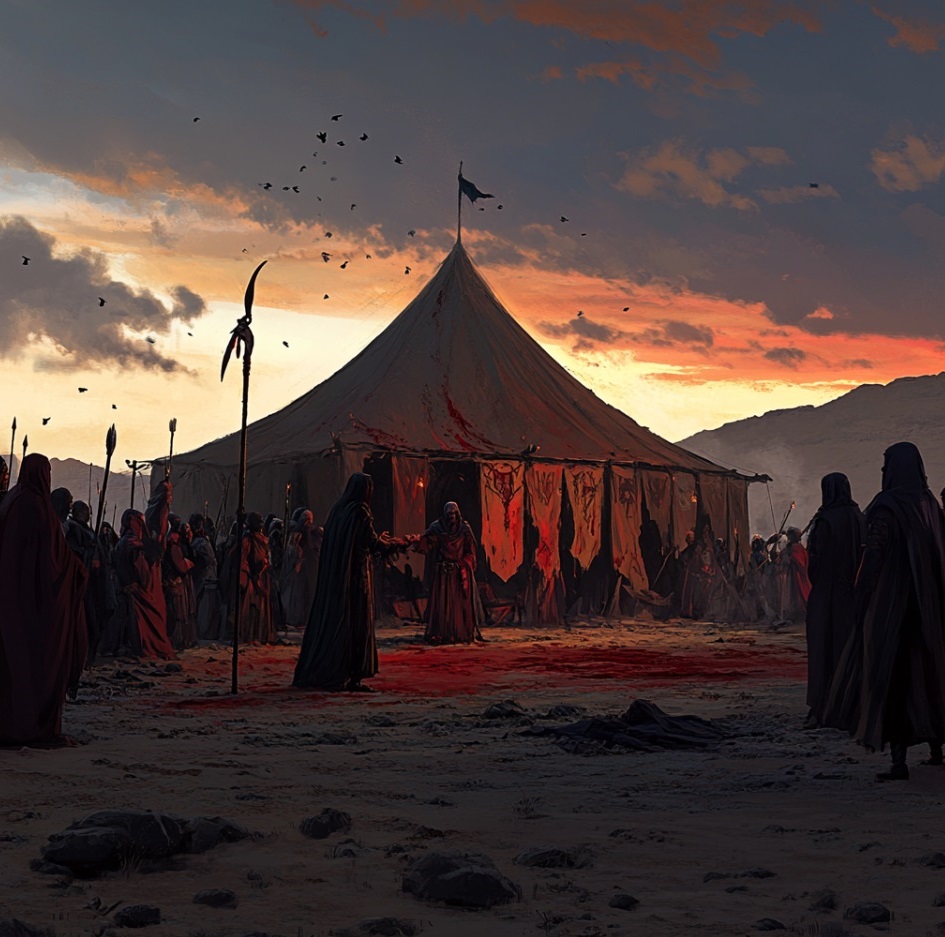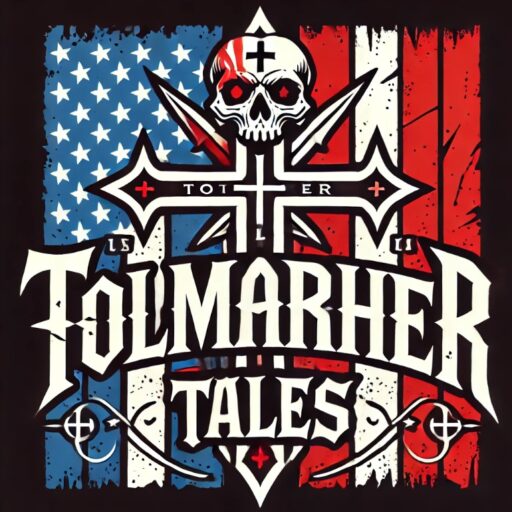Continuus Library: Messiah of Aqueron (Red Messiah #1)

The Messiah of Aqueron is the first instalment of the second series of the Continuus Nexus multiverse, and represents a tonal and thematic shift in the saga. If the foundational series, Chronicles of Aqueron, immersed us in imperial conflicts and space wars on a colossal scale, this new stage opts for a more intimate, more ritualistic, more symbolic, but no less powerful look. Instead of star fleets, we find nomadic caravans. Instead of interplanetary senates, we hear the voice of tribes surviving in the ashes. The epic here comes not from metal, but from dust.
This novel marks the birth of Kadosh, a clone who arrives as a child on Aqueron and who will eventually become the focus of a devastating prophecy. His story is not that of a traditional chosen one: there are no oracles announcing his arrival, no signs in the heavens. His arrival is silent, his childhood anonymous, his fate uncertain. And yet, in every chapter, in every character, in every scene of loss and revelation, his invisible influence is felt. Kadosh is the true Red Messiah, not by divine will, but because he is the fruit of an inheritance that no one fully understands: a creation that mixes science, war, betrayal and longing.
Narrated through multiple points of view, the novel reconstructs a world in ruins, inhabited by fragmented voices, where the memory of a fallen empire intersects with the first signs of a new order. Each character contributes a piece to the construction of the myth. And although Kadosh, at first, appears alone as a child in arms, his presence reverberates like an echo that has yet to take shape.
A Broken World: Aqueron after the Catastrophe
The action is set on Aqueron, a planet devastated by the events narrated in the previous saga. Far from its former glory, it is now a windswept world, marked by superstition, exile and fear. What was once an organised civilisation has dispersed into wandering communities, isolated cities, warring tribes and ruins that whisper forgotten names.
The novel is divided geographically between three cores:
- The desert of the Aramites, where the patriarch Jacob appoints his spiritual heir and provokes a fratricidal war.
- The floating city of Agarthia, where political power is fragmented in a struggle between Maester Leopold and Senator Cassius Trencavel.
- The forest and mountains of the Dag, a community where nature and superstition mingle with the need to survive.
In outer space, the Genesis colony on Crosaurius acts as the last stronghold of the ancient colonists. Here we are presented with a parallel narrative, where human history is reinterpreted through the eyes of Jonah Fox and Ralph Richardson, who open a conversation about the origin of the Messiah and the figure of Abydos, thus planting the ideological roots of the myth that Kadosh will unwittingly embody.
Kadosh: the Child Who Bears Destiny
Kadosh is not born a hero, nor even an ordinary human. He is a clone, a replica of a previous identity, who arrives on the planet under mysterious circumstances. His childhood is spent among refugees, under the custody of those who are unaware of his true nature. He does not speak in the early chapters. He makes no decisions. He does not understand his role. But the attentive reader senses that his mere presence generates a new vibration in the story.
His connection with the prophecies of Sura 44 and the sacred texts of the Sanatana Dharma positions him, unknowingly, as the axis of a change that will affect not only Aqueron, but the entire structure of the Continuus Nexus. His genetic heritage is related to the Seed of Kadosh, a sacred biotechnological artefact that has been manipulated over generations to shape leaders, warriors, and messiahs.
Unlike other protagonists, Kadosh does not choose to be who he is. He does not seek power. But his arrival in Aqueron marks a turning point. His mere existence activates ancient enemies, divides peoples, and disrupts the spiritual balance of a society already on the brink of collapse.
Ten Key Characters Orbiting the Birth of the Messiah
Jacob Patriarch of the Aramites. His decision to anoint his youngest son, Zebulun, as his spiritual heir provokes the betrayal of his eldest, Esau. Jacob dies knowing that his people will be divided, but remains faithful to his prophetic vision.
Esau Brutal warrior, son of Jacob. He rejects his father’s legacy and murders Zebulun to seize power by force. He is the antithesis of the Messiah: the usurper who will lead the dispossessed into exile and oppression.
Zebulun Wise, healing, peaceful. He is chosen by Jacob as “the good stalk.” His symbolic death and later disappearance fuel the legend of the sacrificed heir. He is the original bearer of the lineage that will give rise to Kadosh.
Cassius Trencavel Senator of Agarthia. Intellectual and reformist. He confronts Maester Leopold in a political battle that will end in civil war. He defends a vision of order and justice threatened by old dark alliances.
Leopold III Maester of the airborne city. Ambiguous, weakened, pragmatic. Despite his initially good intentions, he ends up yielding to the blackmail of arcane entities. His ethical downfall symbolizes the decomposition of the structures of power.
Noah Hunter of the Dag. His story is that of the survivor, the common man caught between forces he does not understand. He witnesses the destruction of his world helplessly and seeks to save his family as the skies crack.
Jonah Fox Colonist in Crosaurius. His conversation with Ralph Richardson opens the novel with a philosophical and premonitory tone. He is one of the first to associate the name of the Red Messiah with something real, tangible, genetic.
Ralph Richardson Elder sage. Bearer of ancient knowledge, a blend of science and religion. He relates ancient migrations to the figure of Abydos and plants the idea that the Messiah may not be human in the traditional sense.
Pazazu Igigi entity of dark origin. He appears to Leopold offering power and gold in exchange for slaves. His corrupting influence embodies the return of the arcane and dangerous to the physical plane. He represents structured evil.
Gedeon Elder tribal leader of the Dag. He organizes the communal rite around the monolith after the forest catastrophe. He believes in signs, in oral wisdom, and represents the resistance of tradition against oblivion.
Defining Scenes of the Story
The Prologue in Sippart The appearance of Baalfegor in the ruins, under a red storm, is the opening image of the novel. Here begins the apocalyptic vibration. It is not just a vision: it is a reminder of what has been lost and what is coming.
The Murder of Zebulun Esau stabs his brother before the tribal council. There is no defense. No trial. Just a broken lineage. The blood in the sand symbolizes the end of an era and the beginning of the diaspora.
The Division of the Aramites With Zebulun gone and Jacob dead, the people split. Some follow Esau into violence. Others scatter into the valleys, with the rumor that the true heir still lives.
The Monolith Ritual Amid cold and despair, Gedeon gathers his people and lights the great ritual cauldron. They sing. They pray. They wait. This scene is of sober beauty and evokes the best of human rites in the face of chaos.
The Pact with Pazazu Leopold kneels before an entity not of the human world. Not out of fear, but desperation. Pazazu does not demand. He suggests. And what he suggests transforms the fate of Aqueron forever.
Notable Comments and Phrases
“The Messiah will come without inheritance, but with memory imprinted in blood.”
“There is no lineage without betrayal. No prophecy without blood.”
“The fire that divided the peoples was not punishment. It was warning.”
“The gods do not speak. They filter into the gestures of those who still pray.”
“The first sign is not a star, but a child who does not cry.”
Continuus Nexus: The Expanding Web
The Messiah of Aqueron does not exist in a vacuum. It is part of the immense fabric of the Continuus Nexus. What happens here connects with events from other space-time lines, even if its characters do not know it. The presence of names like Abydos, the escape portals of the Mother System, the Seed of Kadosh, and the consequences of the War of the Axia, all intertwine with the story of Kadosh.
This series proposes a new spirituality within the multiverse. It is no longer just about strategy and power, but about faith, ritual, lineage, and sacrifice. And in that intermediate space, between the political and the mythical, the figure of Kadosh rises as the symbol of a new era.
A Threat is Born, a Hope Grows
Kadosh does not end the novel as a hero. Not even as an active protagonist. But his presence is already irreversible. His marginal childhood, his cloned origin, his connection to sacred texts and ancient visions make him the seed of something that will change the Continuus Nexus forever.
The Messiah of Aqueron is not a story of immediate redemption. It is a story of symbolic gestation, of spiritual fracture, of broken peoples seeking a center of gravity. Its strength lies in the tension between the certainty of ruin and the silent hope that someone—still unaware of who they are—carries within the key to a new era.
That someone is Kadosh.
And this is only his first footprint.
Purchase links (official page)
![]()










